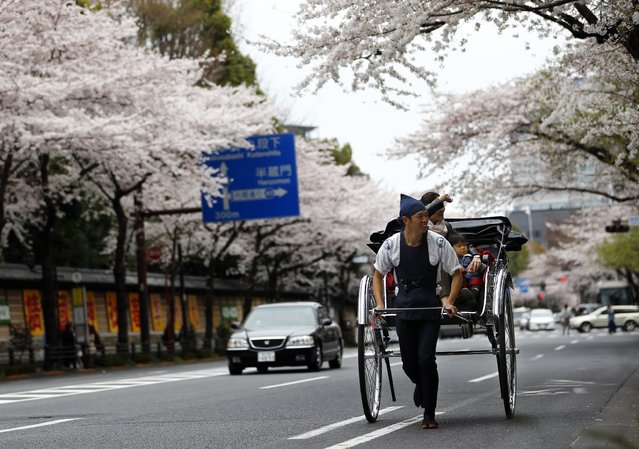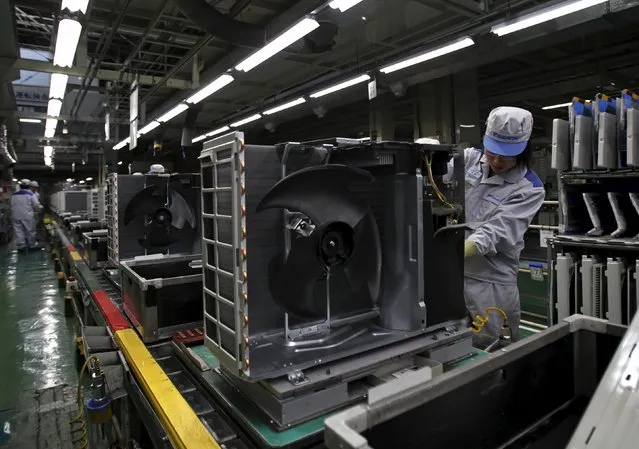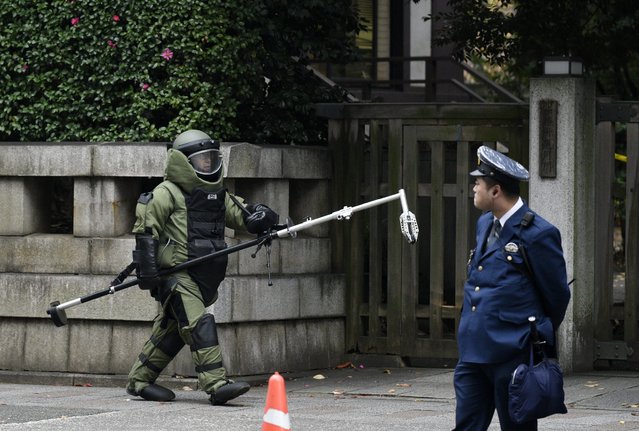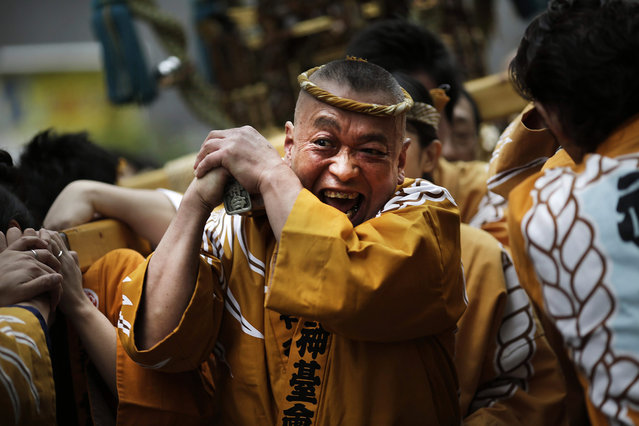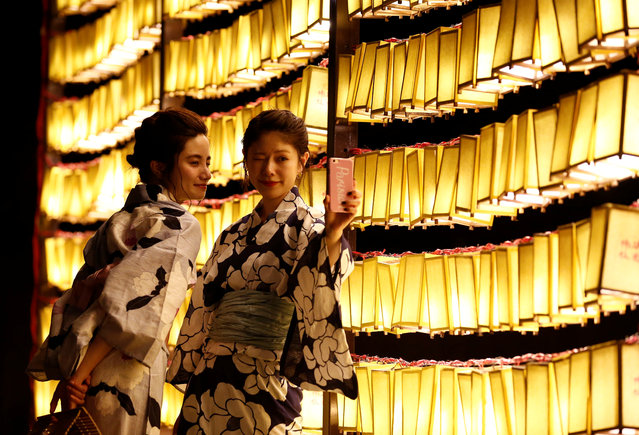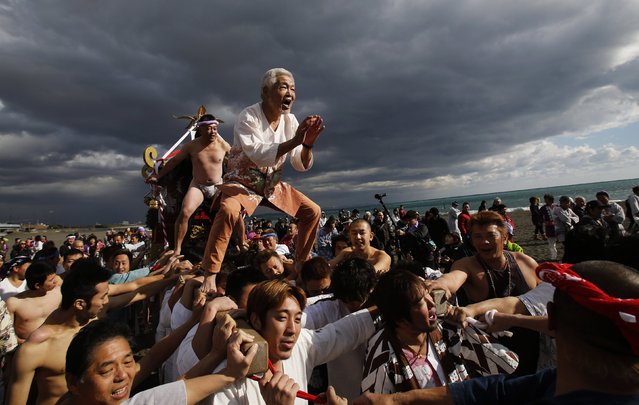
Men ride on a “mikoshi” or portable shrine as local people carry it into the sea during a festival to wish peace in the ocean and good fortune in the new year in Oiso, west of Tokyo, January 1, 2015. (Photo by Yuya Shino/Reuters)
02 Jan 2015 12:27:00,post received
0 comments

